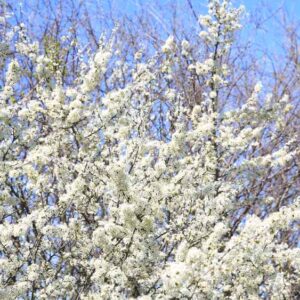Common Birch (Betula Pubescens)
€2.00
The Common Birch (Betula pubescens) is a graceful, hardy tree with silvery bark and soft, golden autumn foliage. Ideal for damp or heavy soils, it supports local wildlife and adds natural beauty to gardens, parks, and rewilding projects.
In stock
Additional information
| Size | 60-90cm when young. |
|---|---|
| Growth Rate | Moderate to fast-growing, reaching a mature height of 10-25 meters, with a slightly narrower, upright form compared to silver birch. |
| Hardiness | Very hardy; tolerates cold, wet, and exposed conditions well, thriving in temperate and subarctic climates. |
| Soil Conditions | Prefers moist, well-drained soils, especially acidic or peaty soils; adapts to a range of soil types, including wet and poor soils. |
| Seasonality | Deciduous; light green leaves in spring and summer turn golden yellow in autumn before dropping. |
| Maintenance | Low-maintenance; requires little to no pruning, though occasional shaping may be done to manage growth. |
| Planting | Ideal for naturalistic and rewilding projects; commonly planted in wetter areas or near bodies of water due to its tolerance for damp soils. |
| Wildlife Benefits | Supports a diverse array of wildlife, providing nesting and shelter for birds, food for insects, and habitat for fungi and lichens. Catkins attract pollinators, and seeds are valuable for birds. |
| Companion Planting | Complements other native trees and shrubs such as rowan, willow, and alder, enhancing biodiversity in woodland or riparian settings. |
| Pest Resistance | Generally resilient but can be susceptible to leaf miners and aphids; monitoring is helpful in maintaining tree health, particularly in young saplings. |




